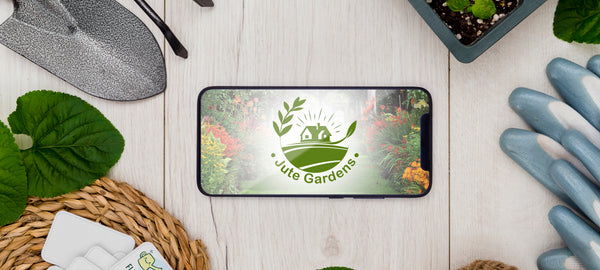
A Guide to Caring for Microgreens
Growing microgreens at home is an easy and fun way to save money and have nutrient-rich food at your fingertips. There are so many benefits of microgreens, and since they only require a small area to grow, they're perfect for those with even the smallest spaces. Although microgreens aren't difficult to grow, they do require tending to thrive. This guide to caring for microgreens will provide you with everything you need to grow these delicious and healthy plants everyone will enjoy.
What Are Microgreens?
Before you can grow microgreens, you need to know what they are. Microgreens are the greens of vegetables harvested right after their cotyledon leaves develop, containing a single set of "true" leaves. They are around one to three inches in length and nutrient dense since the plants are harvested young. In Lehman's terms, they're baby plants! There are many different types of microgreen species, each with a different taste and health benefit to enjoy. Some of the most popular microgreen options include:
- Collards
- Broccoli
- Peas
- Kale
- Red Cabbage
- Basil
- Arugula
- Radish
- Beets
While delicious on their own, there are a variety of uses for microgreens, including salads, sandwiches, wraps, smoothies, juice, garnish, and more.
Growing Your Microgreens

Choosing The Right Spot and Container for Your Microgreens
The first step to growing thriving and nutritious microgreens is deciding where you will put them and the container you will use. Microgreens can grow year-round in the right environment, making them an excellent supplement to ensure you eat your greens even during winter. If planting indoors, choose a spot that receives plenty of indirect light, like a windowsill. Just be sure it doesn't get too hot. Even in overcast climates, this will allow the plants to receive adequate sunlight to grow. If you don't have a window spot readily available, a grow light works well too. Growing your plants outdoors is terrific; just be sure to protect them from harsh elements like direct sunlight, thunderstorms, high winds, or drought.
Once you've chosen a sunny spot, you'll need to pick a planter. Microgreens don't require much room to grow, so a small, relatively shallow pot works fine.
Planting Your Seeds
It may be tempting to dump your seeds into the container and walk away but doing that will set your greens up for failure. The density of the seeds varies significantly according to the type of microgreens you choose to grow; you want to avoid using too many (or too few) seeds. If you're unsure of the correct density, there are a few resources available. When purchasing your seeds, there are often recommendations for seed density written on the package, or you can look up online sources like this to use as a guide. Generally, a 10/20 tray will average seed weight of 1 oz, but you should always do your research to ensure you use the proper amount.
Setting The Correct Humidity Levels and Temperature
When it comes to growing microgreens, humidity and temperature are the two areas that present growers with the most trouble. If you don't have the right amounts of both, you could end up with mold, uneven growth, poor germination, or fungus. Microgreens thrive around 70* F or 21* C, which is considered a comfortable living temperature for most people. You'll want to avoid too many temperature fluctuations to ensure you don't run into a smelly mold problem that will rot your greens before they are ready to harvest.
Regulating the humidity is also a crucial step for the health of your microgreens. Staying with a humidity level between forty and sixty is ideal and will keep them from developing fungus, mold, and diseases.
Remember The Blackout Period
We've already discussed that your microgreens need plenty of indirect sunlight to grow, but there is a period during germination when you will want to avoid the light. This "blackout period" is essential for ensuring the germination process is successful. Once the roots begin growing and the stem stretches upwards, you can move the seedlings into the light. At this point, they need at least six to eight hours of sunlight a day, but many growers find a cycle of twelve to fifteen hours of light followed by nine to twelve hours of darkness is the ideal cycle for growth. As stated before, a grow light is an ideal option for areas without access to adequate sunlight.
Use the Right Amount of Water
As with any living thing, water is essential for growth, but watering too much or too little will hinder the health of your plants. You'll want to stick to watering your greens twice a day as long as the soil isn't overly saturated. During the early days of growth, using a spray bottle is an excellent way to help avoid overwatering while keeping the greens clean. Once the roots are established, you can move to the "bottom-up" method.
The Bottom-Up method for watering entails watering your greens from underneath, placing the water directly at the roots. This method is beneficial since it helps strengthen the growing roots by guiding them downwards toward the water source.
Harvesting Your Microgreens
Once your microgreens reach one to three inches in height and have their first set of leaves, it's time for harvesting! There's no doubt this is the most exciting part of the growing cycle, bringing you one step closer to enjoying your delicious bounty. Before cutting your greens, you'll want to ensure you use a razor-sharp scissor or knife. Pulling the plants using your hands will harm the roots and lead to the death of your greens. Once you're ready to cut, stay away from the bottom of the plant; instead, leave room for the plant to regrow after harvesting. Using one quick motion, cut your greens, and you're done!
Storing And Eating
Once cut, place your microgreens in a dry, sealed container. Be sure to eat them within a few days of harvesting to ensure freshness since they have a short shelf life.
Ensuring The Health of Your Microgreens
To ensure your microgreens are healthy and thriving, check them daily. You can give them a quick once over as you water to see if any problem areas arise. Areas to look out for include:
- Mold formation
- Dry soil
- The correct amount of light
- Proper air circulation
By spending a few moments every day caring for your microgreens, you will have an abundant harvest of nutritious and delicious vegetables.
Microgreens And Sustainability
You can't talk about microgreens without addressing their connection to sustainability. Growing your own food at home is an excellent way to help combat rising grocery prices, ensure you avoid the use of harmful chemical substances and lessen the environmental impact caused by large-scale farming. Farming your own food (even on a small scale) helps develop a deep appreciation for the cultivating process, making you more mindful of our impact on the planet.
Growing microgreens can also make you more aware of the foods you eat, helping you make healthier choices that have a significant impact on your body's health. When your body is healthy, you require less medical intervention, helping reduce the strain on already over-strained healthcare systems. Making one small change like growing your own vegetables can lead to larger ones down the line. You may desire to reduce your carbon footprint, limit the use of disposable plastic packaging, choose to walk or ride a bike over driving, eat less meat, or a million other ways you can help protect the planet.
One easy way to help reduce waste is by using biodegradable containers for your microgreens. By choosing a container that will never contribute to the build-up of our landfills, you can feel incredible knowing you're taking another step toward sustainability. Jute Gardens is the leader in sustainable, eco-friendly home and garden products, expertly pairing style with earth-friendly materials. Here you will find a wide selection of planting options, including their best-selling biodegradable microgreen growing kits. Each kit contains everything you need to grow and harvest delicious microgreens that are perfect for your salads, wraps, sandwiches, and more.
Now you can grow nutritious and great-tasting vegetables at work or home easily with Jute Gardens. That's not all, whether you're searching for creative indoor or outdoor planting solutions, Jute Gardens has the sustainable products you're looking for. Now you don't have to compromise style or quality for sustainability. With Jute Gardens, you can have all the benefits of microgreens in the palm of your hand. So, what are you waiting for? Why not start growing your microgreens today!

